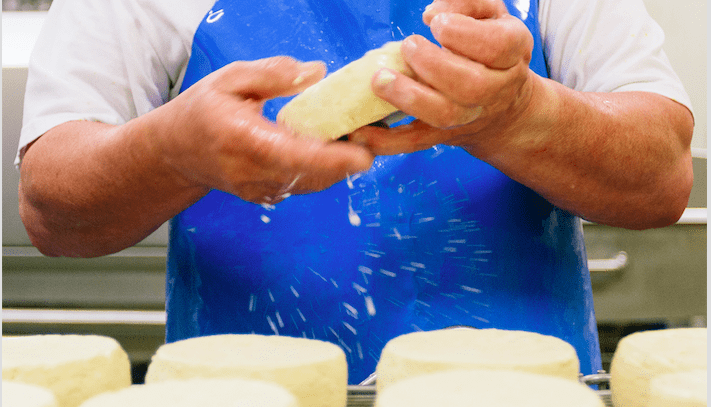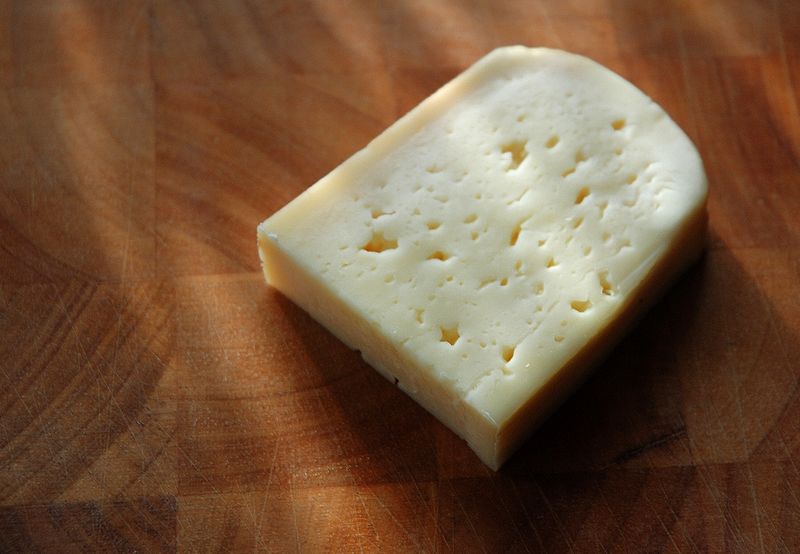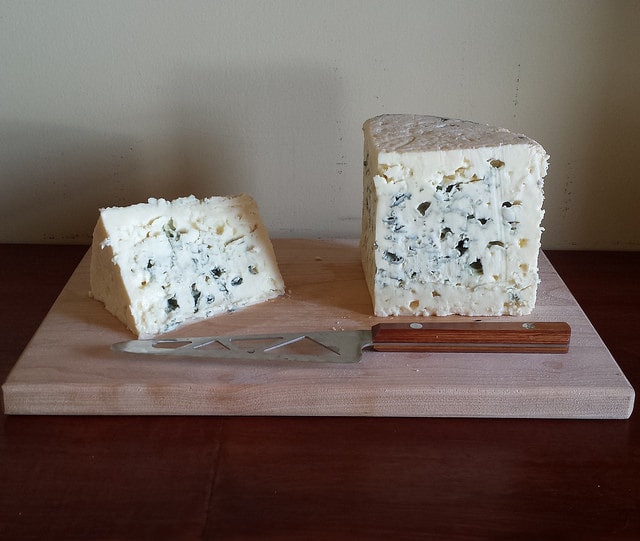
Denmark is famous for a number of culinary feats: the globally-renowned Noma, a simplistic and local tradition, and the famous open-faced smørrebrød. Glaringly absent from this impressive list, however, is cheese.
Scandinavia in general is not really considered an especially cheesy region, however among its neighbors, Denmark is the country most often associated with cheese production. The country enjoys a fairly mild climate, even rainfall, and fertile soil, all of which create ideal conditions for dairy cattle, explaining Denmark’s millennia-old dairy industry. Milk, butter, and cheese have long been staples in the Danish diet due to the country’s long history with dairy.
Vikings were known to keep cattle and dedicated a portion of their dairy bounty to producing cheese. One particular cheese, Gamalost, was included as a diet staple because of its ability to travel long distances without refrigeration. Although it no longer travels the seas in a Viking ship, this cheese is still being made in the small Scandinavian town of Sognefjord.
Gamalost, literally meaning “old cheese,” is used for everything from fuel to an aphrodisiac. Golden-brown, the cheese boasts a crusty texture and strong flavor, considered to be overpowering by many of its opponents. The cheese has a notoriously difficult production process that requires copper cauldrons, dried marsh grass, and massaging by hand to stimulate bacteria absorption, however, purported health benefits and Gamalost admirers have created a fan base for the intense cheese that allows TINE dairy to produce 150-200 tons a year. Today, fans enjoy the cheese on bread with a dollop of something sweet, such as jelly, honey, or clotted cream, or marinated in port, sherry, or brandy.
As the Viking age reached its end in 1066, the population’s traditions diffused throughout modern Denmark, Sweden, and Norway, where they can be visible today in modern culture (and cheesemaking!)
Since much of Danish cooking mimics European tastes, it’s no surprise that a lot of modern Danish cheeses closely resemble European cheeses, albeit with a few tweaks and Danish names. However despite their roots in European cheesemaking, Danish cheeses have a rich history and have developed into unique symbols of Denmark’s culture and culinary prowess.
Take, for example, esrom. Esrom is a stinky, pale yellow, semi-soft cheese made from cow’s milk with a full, buttery flavor. The name is derived from the Esrom Abbey, where it was produced in the 11th and 12th century. The recipe, however, was lost, and thought to be rediscovered in the 1930s, when its popularity began to rocket. Originally called Danish Port Salut, esrom was forced to go through something of an identity crisis when the EU declared its name too close to the French Port Salut.

Esrom. Photo credit: pastorius | Wikimedia
Shaped in 3 lb rectangular loaves rather than wheels, esrom stands out not just in shape, but in flavor. A 10-12 week aging period that includes brining and washing develops a unique stinky aroma, which has led to its notoriety among stinky cheeses. Despite its pungent smell, esrom retains a fairly mild flavor, although it becomes more savory and intense throughout the ageing process.
Esrom is one of only two Danish cheeses to enjoy the Protected Geographic Indicator, or PGI distinction, which is awarded to cheeses “produced in Denmark from Danish milk and at approved dairies that are regularly checked to ensure that they produce the cheeses precisely according to the specifications laid down.” The other, Danablu, has just as much flavor.
Similar to another French cheese, Roquefort ,is exactly what it sounds like: a Danish blue cheese. Made from cow’s milk, this cheese has a crumbly yet creamy texture and a sharp and salty but buttery taste. Danablu’s roots also stretch back centuries, to Hanne Nielsen, who, in the 1850s, hoped to create the first Danish blue cheese. A couple decades later, Marius Boel picked up where Nielsen left off, and after 10 years of experimentation, created the Danablu we know today.
Although these cheeses are famous throughout Scandinavia and to the trained cheese lover, they remain fairly absent from the Western cheese vocabulary. However with a rich cultural tradition and decades of perfecting technique, Danish cheeses are ready to enjoy some well-deserved time in the spotlight.





Thanks for reading and linking to my article at RealScandinavia.com! As a cheese lover I’m glad to discover your website. Just one correction in your article: the town where gamalost is made is called Vik, not Sognefjord. The Sognefjord is the body of water that Vik is located on. (You might also want to say it’s a Norwegian town rather than a Scandinavian one, so your readers don’t think it’s in Denmark.)